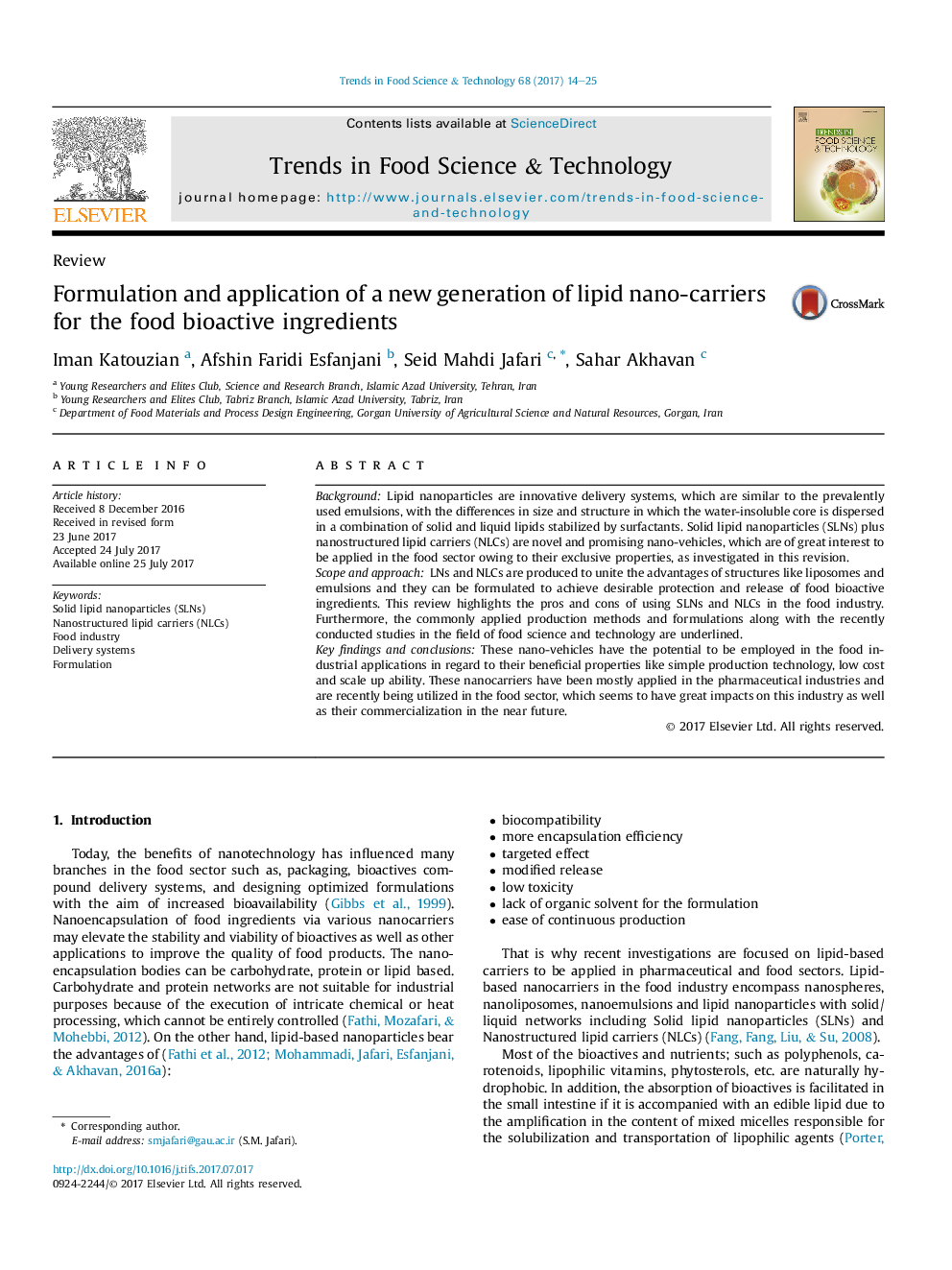| Article ID | Journal | Published Year | Pages | File Type |
|---|---|---|---|---|
| 5523620 | Trends in Food Science & Technology | 2017 | 12 Pages |
â¢Solid lipid nano-structures (SLNs) and nano structured lipid carriers (NLCs) are green nanovehicles.â¢Formulation and preparation methods for loading bioactive compounds into SLNs and NLCs are summarized and listed.â¢Recent studies on application of SLNs and NLCs in the food industry are reviewed.
BackgroundLipid nanoparticles are innovative delivery systems, which are similar to the prevalently used emulsions, with the differences in size and structure in which the water-insoluble core is dispersed in a combination of solid and liquid lipids stabilized by surfactants. Solid lipid nanoparticles (SLNs) plus nanostructured lipid carriers (NLCs) are novel and promising nano-vehicles, which are of great interest to be applied in the food sector owing to their exclusive properties, as investigated in this revision.Scope and approachLNs and NLCs are produced to unite the advantages of structures like liposomes and emulsions and they can be formulated to achieve desirable protection and release of food bioactive ingredients. This review highlights the pros and cons of using SLNs and NLCs in the food industry. Furthermore, the commonly applied production methods and formulations along with the recently conducted studies in the field of food science and technology are underlined.Key findings and conclusionsThese nano-vehicles have the potential to be employed in the food industrial applications in regard to their beneficial properties like simple production technology, low cost and scale up ability. These nanocarriers have been mostly applied in the pharmaceutical industries and are recently being utilized in the food sector, which seems to have great impacts on this industry as well as their commercialization in the near future.
Graphical abstractDownload high-res image (223KB)Download full-size image
